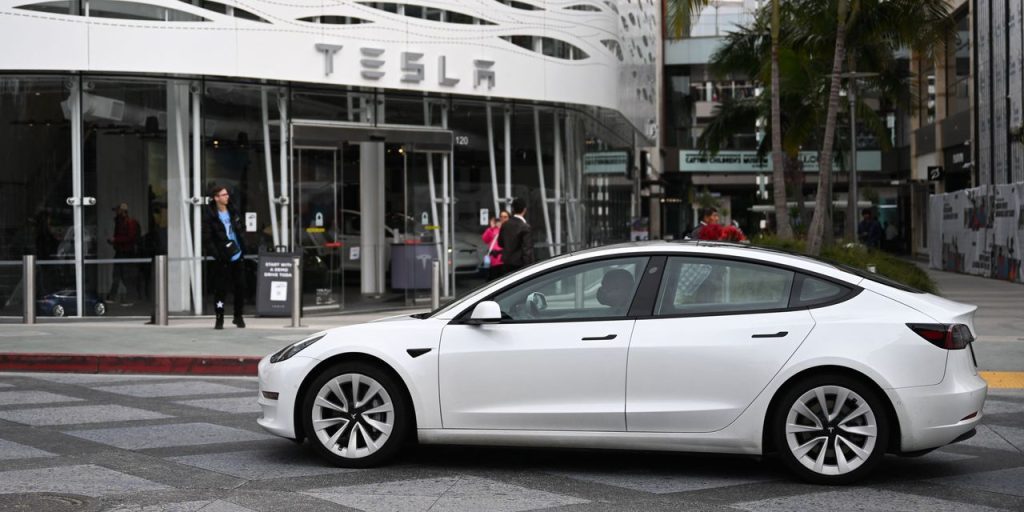Depending if an investor is a
Tesla
bull or
Tesla
bear, Elon Musk’s pricing strategy is either a stroke of genius or a disaster starting to unfold.
Tesla (ticker: TSLA) bulls and bears rarely see eye to eye and typically have vastly different interpretations of the same data point. Bulls and bears, however, might be able to both acknowledge that Tesla’s pricing strategy is unprecedented. Both sides might be wrong about that.
Tesla has cut prices around the globe several times in the past few months. The most notable cuts came in mid-January when Tesla dropped U.S. prices for its most popular vehicle, the Model Y, by $13,000, or almost 20% on some versions of the EV.
New car prices just don’t change like that. “Historically speaking, price cuts of $1,000 only happen during recessions in the traditional car industry,” says DataTrek co-founder Nicholas Colas. He is a former Wall Street auto analyst that now publishes broader-based market insights for his clients.
A thousand dollars amount to roughly 2% to 5% the price of a new vehicle. Nothing like 20%. That isn’t the whole story though. There is the dealership factor.
Auto makers adjust prices to clear out dealer inventories since high inventories are what prevent dealers from ordering more cars from the factory. Traditional auto makers such as
General Motors
(GM) and
Ford Motor
(F) generate revenue, for the most part, by selling cars to dealers. Dealers are the ones that sell cars to the U.S. consumers.
Tesla, of course, doesn’t have a traditional dealer network. It is both car maker and car dealer. That is one reason investors should expect more pricing volatility from Tesla versus its competition. All of its discounts are visible. Dealer-related discounts rarely rise to become investor-level news.
“I think one of the things that is happening is that the new luxury entries from Europe—Mercedes and
BMW
in particular—aren’t selling as well as expected and have started to discount,” says Benchmark auto analyst Mike Ward. He relayed a story about a customer recently buying a
BMW
(BMW.Germany) iX. The dealer gave them “$10,000 off sticker without asking.”
That is roughly 12% off the base starting price of an iX. It’s a Tesla-like discount that goes mostly unnoticed by Wall Street.
Ward doesn’t cover Tesla stock. Neither does Colas.
Colas has other thoughts about Tesla’s pricing strategy. “I assume Tesla’s strategy is based on the assumption of customer retention,” says the DataTrek co-founder. “Car buyers are a notoriously fickle lot, with only about 50% brand loyalty at the next purchase. Maybe a new technology like EVs is different, with higher retention. Either way, Tesla probably can’t risk losing market share at this point in the game.”
So large discounts might not be as rare as investors assume. The dealer channel just makes it hard to suss out. What’s more, Tesla appears motivated to protect market share.
It looks like Tesla was successful doing that in the first quarter. Final U.S. numbers will be out in a few days from third party data providers. Tesla doesn’t report sale regionally. Its U.S. sales, however, likely grew faster than the overall industry in the first three months of 2023. Tesla also grew its market share in China in the first quarter following its price cuts.
Lower prices will impact profit generation for Tesla. Wall Street expects the company to produce automotive gross profit margins of roughly 21% in the first quarter of 2023, down from about 30% reported in the first quarter of 2022.
Whether that is a sign of Tesla’s cost leadership or a looming disaster will be debated by Tesla bulls and bears next.
Those interested in the debate can reference the price of a Model T which dropped from $850 to $260 between 1909 and 1924. Henry Ford’s scale benefits were passed on to consumers.
They can also reference the creator of the modern rebate: Chrysler. The auto maker came up with a plan to send rebate checks to customers in 1975 to clear out unsold inventory.
Write to Al Root at allen.root@dowjones.com
Read the full article here




